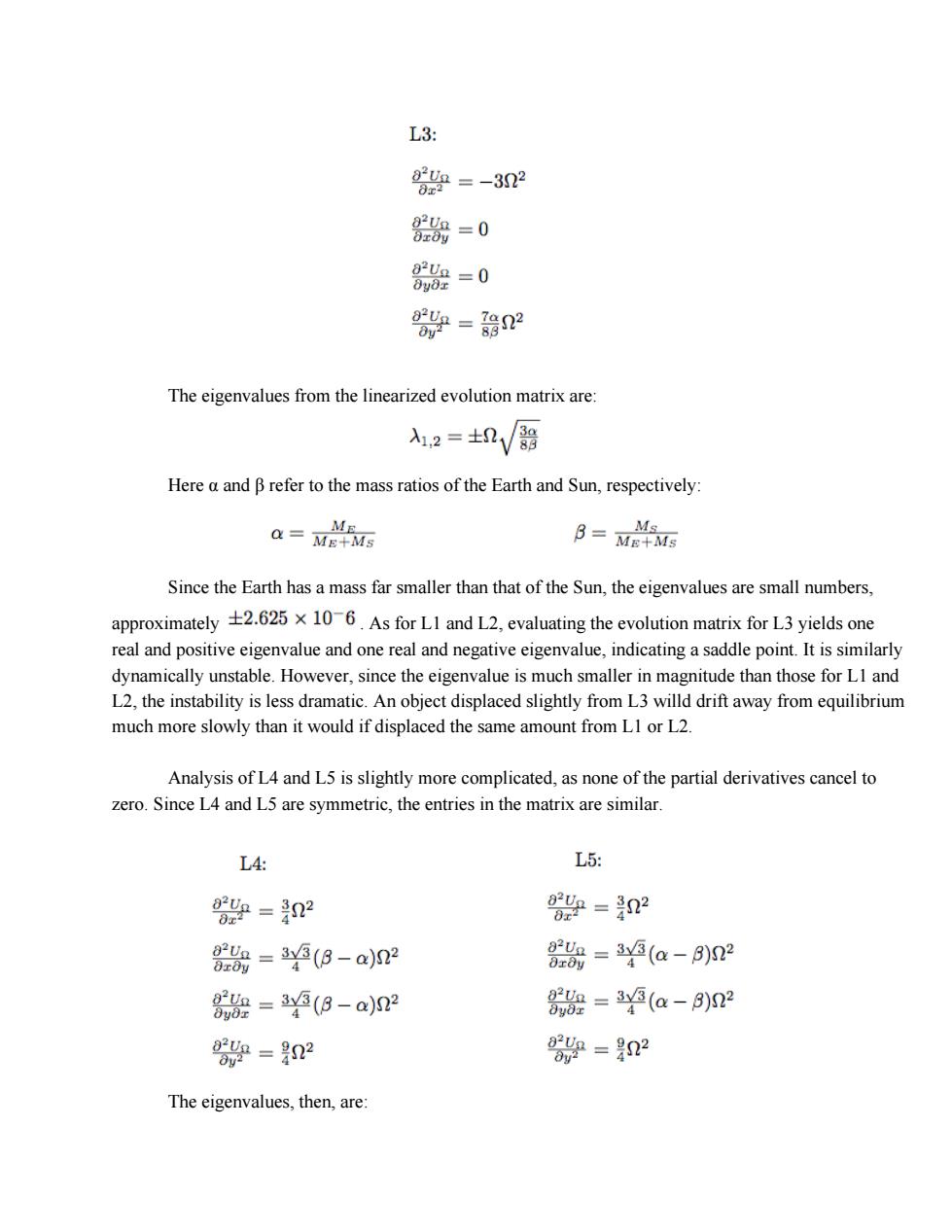正在加载图片...

L3: 82=-3n2 0x2 828=0 8xOy 82U9=0 By8: 9=胎2 The eigenvalues from the linearized evolution matrix are: 入1,2=0√器 Here a and B refer to the mass ratios of the Earth and Sun,respectively: ME Q=ME+M5 BMMs Since the Earth has a mass far smaller than that of the Sun,the eigenvalues are small numbers, approximately.625106.As for LI and L2,evaluating the evolution matrix for L3 yields one real and positive eigenvalue and one real and negative eigenvalue,indicating a saddle point.It is similarly dynamically unstable.However,since the eigenvalue is much smaller in magnitude than those for LI and L2,the instability is less dramatic.An object displaced slightly from L3 willd drift away from equilibrium much more slowly than it would if displaced the same amount from LI or L2 Analysis of L4 and L5 is slightly more complicated,as none of the partial derivatives cancel to zero.Since L4 and L5 are symmetric,the entries in the matrix are similar. L4: L5: 2=n2 -n2 =3¥(3-a)2 8xOy g=3Y(a-8)n2 8rOy 89=3¥(8-a)22 8yOE 80=3¥(a-9)22 0yox 歌=n2 50=n2 The eigenvalues,then,are:The eigenvalues from the linearized evolution matrix are: Here α and β refer to the mass ratios of the Earth and Sun, respectively: Since the Earth has a mass far smaller than that of the Sun, the eigenvalues are small numbers, approximately . As for L1 and L2, evaluating the evolution matrix for L3 yields one real and positive eigenvalue and one real and negative eigenvalue, indicating a saddle point. It is similarly dynamically unstable. However, since the eigenvalue is much smaller in magnitude than those for L1 and L2, the instability is less dramatic. An object displaced slightly from L3 willd drift away from equilibrium much more slowly than it would if displaced the same amount from L1 or L2. Analysis of L4 and L5 is slightly more complicated, as none of the partial derivatives cancel to zero. Since L4 and L5 are symmetric, the entries in the matrix are similar. The eigenvalues, then, are: